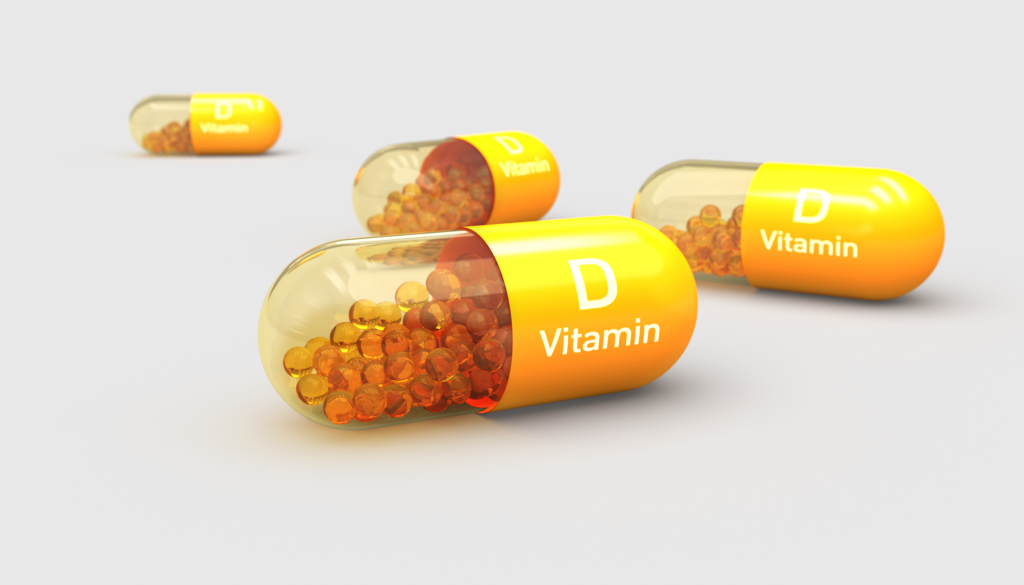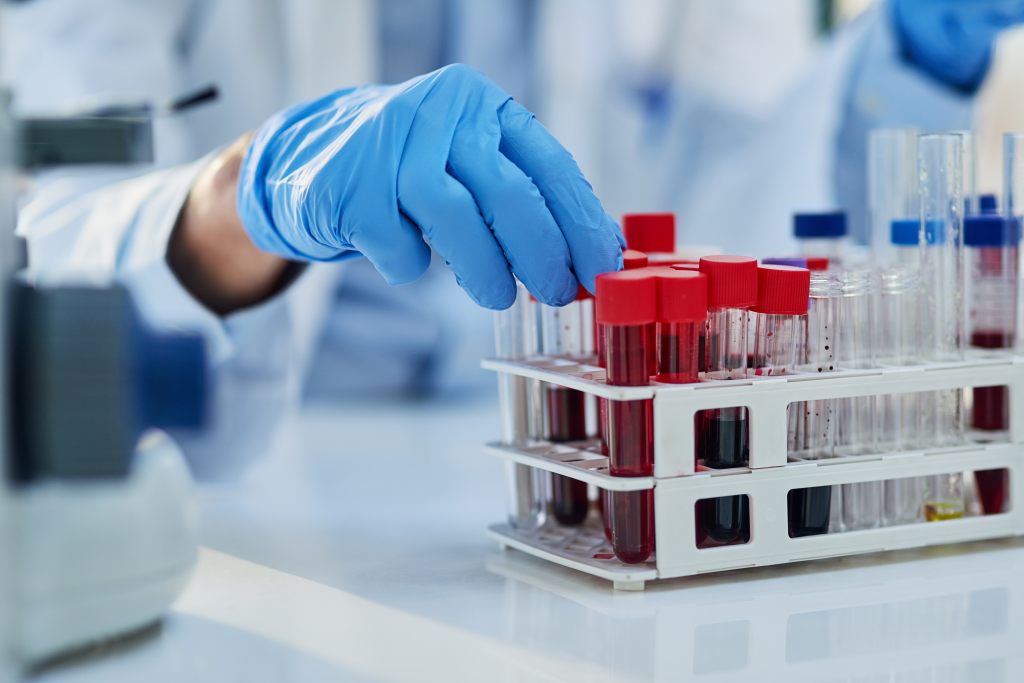At a glance
Vitamin D is essential for bone health, immune function, and overall well-being. While supplementation can help manage a deficiency, excessive vitamin D intake can lead to toxicity, calcium imbalances, and kidney damage. Pairing vitamin D with vitamin K2 and monitoring vitamin D blood levels helps ensure safe and effective supplementation.
Vitamin D is crucial for a healthy body. It supports strong bones, normal blood calcium levels, and a healthy immune system.
Vitamin D deficiency is widespread, and vitamin D supplementation can be an effective way to support healthy vitamin D levels. However, fat-soluble vitamin D accumulates in the body, and taking too much vitamin D can increase the risk of hypercalcemia and kidney disease.
Discover how much vitamin D is too much and how you can benefit from vitamin D supplements without the risk of vitamin D toxicity.
Why take vitamin D supplements
Vitamin D is produced in the skin when sun exposure triggers a chemical reaction that converts previtamin D3 to vitamin D3. Vitamin D3 is then transported to the kidneys and liver, where it’s turned into active vitamin D.
The amount of vitamin D your body can produce depends on factors such as sunlight exposure, age, skin tone, body weight, and geographical location.
Small amounts of vitamin D can be found in some foods, including fatty fish, egg yolks, and organ meats. However, dietary sources are unlikely to provide enough vitamin D to maintain healthy blood levels.
Vitamin D is essential for skeletal health, as it promotes the intestinal absorption of dietary calcium needed to support healthy bones and teeth.
It’s also crucial for maintaining a strong immune system, promoting normal cellular function and hormonal balance, and has been linked to better brain health and cognition.
It’s estimated that more than 40 percent of U.S. adults are vitamin D deficient or at risk of vitamin D insufficiency.
Common symptoms of vitamin D deficiency are:
- Tiredness
- Low energy
- Changes in sleep patterns
- Emotional imbalances
- Reduced immune resilience
Watch the video below to discover how to maintain vitamin D levels without the risk of toxicity.
Is vitamin D dangerous?
Vitamin D is a fat-soluble vitamin that’s stored in fat cells. It isn’t excreted like water-soluble vitamins, and large supplementation doses can cause excessive vitamin D accumulation in the body, resulting in toxicity.
Vitamin D increases the intestinal absorption of dietary calcium, and high doses of vitamin D can lead to elevated serum calcium levels, increasing the risk of kidney damage and soft tissue calcification.
To help maintain balanced nutrient intake and proper calcium distribution, vitamin D is best taken together with vitamin K2.
Vitamin K2 is a fat-soluble vitamin that supports the movement of calcium from the bloodstream into bone tissue, helping promote efficient calcium use in the body.

How much vitamin D3 is too much?
How much vitamin D you need and how much is too much depends on a range of factors, including your actual vitamin D status, age, average exposure to sunlight, and geographical location.
The National Institute of Health recommends 600 international units (IU) of vitamin D daily. However, a higher dosage may be needed for individuals with increased nutrient requirements and those with little sunlight exposure.
Short-term intakes of up to 10,000 IU of vitamin D per day are sometimes used to restore optimal levels, typically under the guidance of a healthcare provider.
Evidence published in The Journal of Steroid Biochemistry and Molecular Biology found that 10,000 IU of vitamin D daily wasn’t linked to an increased risk of elevated calcium levels or kidney damage.1
Regularly evaluating serum vitamin D levels with blood tests is the most reliable way to determine vitamin D requirements and ensure healthy vitamin D levels without the risk of toxicity.

How do you know if you’ve had too much vitamin D?
Vitamin D toxicity is relatively rare and only related to excessive vitamin D supplementation. Vitamin D metabolism is a tightly controlled process, and there is no risk of an overdose due to sun exposure or from dietary sources of vitamin D.
Because of vitamin D’s role in calcium absorption, taking large doses of vitamin D supplements can lead to elevated blood calcium levels, also known as hypercalcemia. While calcium is essential for many physiological functions, hypercalcemia can have serious consequences.
Research published in Clinical Medicine suggests that prolonged periods of excessive blood calcium levels can cause kidney damage, gastrointestinal issues, and interfere with normal heart functioning. Severe cases of hypercalcemia have been linked to increased risk of kidney failure and pancreatic cancer.2
Common symptoms of vitamin D toxicity include:
- Vomiting
- Weakness
- Fatigue
- Stomach pains
- Kidney stones
- Frequent urination
- Heart arrhythmia
- Confusion
- Depression

What to do if you take too much vitamin D
If you suspect you may have taken too much vitamin D, it’s best to consult your doctor. A blood test to assess vitamin D status and calcium levels is generally the first step in determining if vitamin D toxicity is present.
Limiting sunlight exposure, restricting dietary calcium intake, and avoiding nutritional supplements containing vitamin D are typical recommendations to correct vitamin D toxicity.
In more severe cases, intravenous medication may be necessary to reduce elevated blood calcium levels and protect organs and tissues from calcification.
A number of follow-up blood tests may be necessary to determine whether vitamin D levels are back in the normal range.
Key takeaways
- Vitamin D supports bone strength, immune health, hormone production, and calcium balance.
- Excessive supplementation can lead to mineral imbalance and associated kidney and cardiovascular issues.
- While vitamin D toxicity is rare, it can occur from prolonged supplement overuse but isn’t caused by sun exposure or dietary sources.
- Combining vitamin D with vitamin K2 helps regulate calcium utilization in the body.
- Regular vitamin D blood tests are vital to ensure optimal vitamin D levels and help prevent overdose.
FAQ
1. How much vitamin D can I safely have each day?
The most suitable daily dose of vitamin D for you depends on many factors, including your vitamin D status, sunlight exposure, skin tone, and geographical location. General recommendations suggest a recommended dietary allowance (RDA) of 600 IU of vitamin D.
However, individuals with greater vitamin D needs may require higher intakes, which should be monitored by a qualified professional.
2. How much vitamin D is too much?
Vitamin D intake above 10,000 IU per day may increase the risk of vitamin D toxicity in some individuals, and it’s best to perform regular blood tests to confirm your vitamin D status if you take large doses daily.
3. Can you overdose on vitamin D?
Vitamin D is a fat-soluble vitamin that is stored in fat cells. Because excessive vitamin D isn’t excreted, large doses of vitamin D supplementation can result in a vitamin D overdose and toxicity.
4. What are the symptoms of a vitamin D overdose?
High-dose vitamin D supplementation can cause elevated levels of blood calcium, which are linked to gastrointestinal issues, nausea, excessive thirst, confusion, and fatigue.
Excessive calcium levels may interfere with normal brain and heart function and increase the risk of kidney damage and the calcification of blood vessels.
5. What is vitamin D toxicity?
Vitamin D toxicity, also referred to as hypervitaminosis D, results from taking extremely high doses of vitamin D for a prolonged period. Vitamin D toxicity is rare and only occurs due to excessive supplement intake, not from dietary intake or sun exposure.
6. Is 10,000 IU of vitamin D too much?
Taking 10,000 IU of vitamin D daily is generally considered safe. However, it’s best to regularly check your vitamin D status to ensure that vitamin D levels are in healthy ranges and you are not at risk of vitamin D toxicity.
Sources
- https://www.sciencedirect.com/science/article/abs/ ?
- https://pmc.ncbi.nlm.nih.gov/articles/PMC6297576/ ?


















